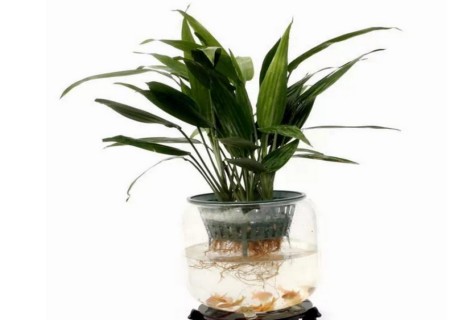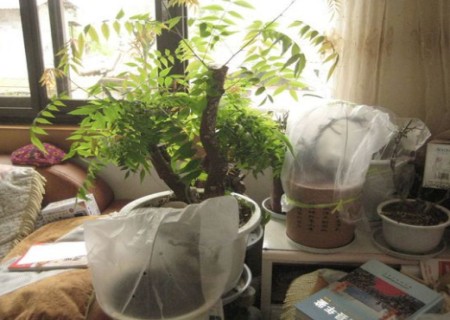Planting method of potted wine bottle orchid
The wine bottle orchid is also called the elephant leg tree, which is named because the base of its stem is similar to the wine bottle. It is a tree-shaped succulent plant. Because of the strange shape of the stem, the base is particularly inflated, resembling a large wine bottle, plus the bark cracked into small squares and clustered leaves are whirling. Become a very strange decorative plant. It not only has a good beautification effect, but also can absorb indoor benzene, formaldehyde and other harmful substances to purify the home.
Wine bottle orchid is not the orchid we are familiar with, nor is it a hanging orchid. It is originally a tall tree with a height of several meters, but because the lower part of the branch near the soil expands like a wine bottle, it is very unique, so it is improved into a potted variety for indoor culture. Now I would like to introduce the planting method of wine bottle orchid.
1. Distribution of soil
Potted soil to choose good drainage, you can use 3 parts of fertile garden soil and 1 part of cinder mixed, and then add a small amount of bean cake or chicken manure as base fertilizer.
2. Raising seedlings
Wine bottle orchid is often propagated by sowing and cutting.
The main results are as follows: (1) sowing method: the seeds are mostly carried out in March-April, and the seeds are sown in the medium mixed with rotten leaf soil and river sand, keep them moist (not too wet, otherwise rot), and germinate in 15-20 days.
(2) cutting method: the naturally growing side branches of the plant can be cut in spring for cuttings, cut and hung for 1-2 days, then planted in plain sandy soil, covered with plastic film to maintain humidity, and can take root in 15-20 days.
3. Selection of basin
The pot should be planted with a high waist, and the diameter of the pot should not be too large. It is better that the diameter of the pot is larger than that of the stem base of the plant.
4. Upper basin
The base of the inflated stem should be completely exposed to the soil surface, and 2 parts of rotten leaf soil, 1 part of garden soil and 1 part of river sand and a small amount of plant ash can be used in pot cultivation.
5. Fertilization
In spring, summer and autumn, liquid fertilizer or compound fertilizer was applied every 2-3 weeks to promote base expansion. When fertilizing. Pay attention to the increase of phosphorus and potassium fertilizer, the ratio of nitrogen, phosphorus and potassium is 5:10:5. Stop fertilizing in winter.
6. Watering
Because the stem of wine bottle orchid can store water for use when water is scarce, it is especially resistant to drought and can grow normally without watering for half a year. Watering to basin soil moist for the degree, grasp the principle of dry rather than wet, avoid stagnant water in the basin, otherwise fleshy roots and stems are easy to rot. Especially when the temperature drops after the end of autumn, the amount of water should be reduced to improve the cold resistance of the tree. Control watering in winter, no dry no watering. To maintain a high air humidity in the high temperature season, you can often sprinkle water to the ground and spray a small amount of water to the leaf surface.
7. Pruning
When the plant enters the dormant or semi-dormant period in winter, the branches such as thin, disease and insect, withered and overdense should be cut off. The branches can also be arranged in combination with cuttings.
8. Change the basin
The pots were changed every 2-3 years in spring, before a large number of new leaves germinated in spring. Remove the surrounding old soil when changing the basin, and then change to a larger basin.
9. Diseases and insect pests
The wine bottle orchid sometimes suffers from leaf spot disease. Bordeaux liquid is sprayed every half a month. Insect pests are caused by blind bugs, whitefly and scale insects, and can be sprayed with 1500 times of omethoate emulsion.
Time: 2019-05-24 Click:
- Prev

Hydroponic Culture method of Cymbidium mongolica
The orchid is tall and straight in shape, bright and green in color, graceful, elegant and graceful; at the same time, it is strong, adaptable and extremely shady, so it is an excellent shade-loving foliage plant for indoor greening and decoration. It is suitable for home and office layout. Can be watched alone; can also be arranged with other flowering plants
- Next

How to cultivate the old pile of fragrant wood-planting method of fragrant wood
When it comes to fragrant wood, Wenshan people are too familiar with it, but this familiarity is only a kind of awareness, and the comprehensive and in-depth understanding and research of fragrant wood has not been popularized by the public. In recent years, with the development of social economy, the development and utilization of fragrant wood has been greatly developed.
Related
- Fuxing push coffee new agricultural production and marketing class: lack of small-scale processing plants
- Jujube rice field leisure farm deep ploughing Yilan for five years to create a space for organic food and play
- Nongyu Farm-A trial of organic papaya for brave women with advanced technology
- Four points for attention in the prevention and control of diseases and insect pests of edible fungi
- How to add nutrient solution to Edible Fungi
- Is there any good way to control edible fungus mites?
- Open Inoculation Technology of Edible Fungi
- Is there any clever way to use fertilizer for edible fungus in winter?
- What agents are used to kill the pathogens of edible fungi in the mushroom shed?
- Rapid drying of Edible Fungi

